Justin Robinson's Blog, page 28
March 29, 2013
Now Fear This: High Tension
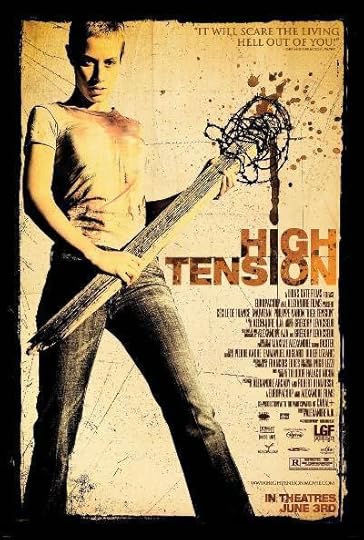
If you think of the barbed wire as pubes, the symbolism becomes more apparent.
The word “apologist” has some unfortunate connotations. Because it shares DNA with “apologize,” most people assume that this is what apologists do, which then implies that whatever they are talking about has wronged someone in some way. All “apologist” actually means is “defender,” and sometimes you have to defend things that are unjustly maligned, like this week’s Now Fear This, the 2003 New French Extremism film Haute Tension (released here as High Tension, and in Britain somewhat bafflingly as Switchblade Romance, despite featuring not a single switchblade and only being romantic to John Wayne Gacy).
The furor over High Tension comes from the twist ending. I’m going to break one of my arbitrary and porous rules and discuss that ending, but with the caveat that I will do so only at the end of the review, and will warn you in advance. If you like what you’re reading up until then, rent High Tension, watch it, and come back and we can discuss. All right? All right.
High Tension was intended as an homage to the gritty horror of the ‘70s and early ‘80s and that love oozes from every frame. The slight grain to the film invokes Craven classics like The Last House on the Left and The Hills Have Eyes. The gore is visceral in a way modern films seldom attain due to the makeup effects by the brilliant Giannetto De Rossi, the man behind Zombie, otherwise known as that movie were a zombie fights a goddamn shark. Director Alexandre Aja includes a bathroom scene as homage to Maniac and an axe murder to echo Dick Hallorann’s tragic end in The Shining. It’s a film that treats trash culture as high art, and since that’s pretty much my entire raison d’etre, I was pretty much in the bag from the word go.
Two college girls, Marie (Cécile de France) and Alexia (mono-named Maïwenn), head to Alexia’s house in the country for some quiet time to study. Alexia teases Marie for being a prude, which, along with her kicky Caesar haircut, sets her up as this film’s Final Girl. Although a later when Marie rubs one out in her room, she is implied to be something a little different. Since they arrived, a creepy guy in what can only be described as a murder truck has been shadowing the property, doing wholesome things like using a severed head for oral sex. When the sun goes down, this guy, credited only as “Le Tueur” (French for “The Killer”), comes in, and systematically murders Alexia’s mom, dad, little brother, and St. Bernard. The violence is gruesome in the extreme, and though it might be tempting to level the old “torture porn” accusation, it is abundantly clear that the filmmakers are siding with the victims. The killer abducts Alexia, and the blood and pictures in his murder truck implying that Alexia is merely the latest victim in a horrifying spree.
Marie, who has been desperately hiding from the killer, ends up getting trapped in the truck while trying to get Alexia free. As the killer slowly becomes aware of the tomboyish heroine dogging his steps, he starts actively hunting her. It is only when Marie grabs her symbolic phallus (in this case, a fence post wrapped in barbed wire) can she defeat her hyper-masculine tormentor.
The interesting thing about the killer is the specific brand of masculinity he represents. Aja wisely eschewed the more extravagant trappings of ‘80s-era slasher excess, instead giving us a schlubby guy in coveralls and a trucker hat pulled low over a florid, jowly face. Whenever a serial killer is arrested, with few exceptions, the striking thing is how banal he looks. He is usually overweight and unimpressive, presenting a stark contrast with his monstrous crimes. It’s like Somerset says in Se7en, “If we catch John Doe and he turns out to be the devil, I mean if he’s the Satan himself, that might live up to our expectations, but he’s not the devil. He’s just a man.” Le Tueur is only remarkable in the level of violence of which he is capable.
I have officially gotten as far as I can without discussing the twist. If you haven’t seen High Tension and want to, now’s the time to go and rent it. Go on. This will still be here when you get back.

These otters are here as a spoiler buffer. And because I love them.
Okay, first I want to discuss twists as a concept. When I was first beginning to take writing seriously as a possible career, I rebelled against the concept of the twist. Short stories, they said, always had one. “Why can’t you just tell a good story?” I whined. My problem was that twists had begun to stand in for good storytelling. You’d have a bad story buoyed by a twist that wasn’t set up and didn’t make sense in retrospect, and this was considered “good.” Adaptation parodies this kind of twist with Kaufman’s fictional hack of a brother’s screenplay Three. Ironically enough, the twist of High Tension is the same as the one in Three, and yet somehow manages to avoid the same fate.
For those who haven’t guessed, Marie is the killer. She’s in love with Alexia, but unable to come to grips with the possible rejection, and so invents a monstrous alter-ego who will drive them together and give them a little privacy. On the face of it, this is the hackiest of all twists, since the logistics of any film completely break down. Two things save High Tension from ridiculousness. The first is that the twist is set up from the very beginning. Marie has a nightmare of being chased through the woods, and when asked who was chasing her, she says it was herself. The climax of the film uses the same footage for when the killer is pursuing Marie. This dovetails nicely with the other thing saving the film: that it’s unclear exactly how much is happening in Marie’s mind. There are a few points in the film that at first appear to be logic gaps (Marie escapes from a truck padlocked from the outside, for example), that are actually holes in her internal insanity and clues to the audience that we are not seeing the real story. It also dodges the worst of all tropes, “it was all a dream,” by keeping the consequences intact: Alexia’s family is still extremely dead.
Marie’s subconscious designed the killer, and it’s telling what shape he takes. She is clearly uncomfortable with male attention, and invents a sadistic sex killer who personifies the destructive male gaze. The killer takes as a souvenir a picture of Alexia when she and Marie were on vacation together, implying a connection to a happy moment between the two women. The other men in the story also conform to Marie’s dim view of the gender: Alexia’s father makes a single leering comment when shy Marie arrives, and the gas station attendant Marie begs for help has a weapon on a stack of porno magazines.
High Tension is a film that unfairly lives and dies with its twist. It’s a rich homage to classic horror, and deserves a chance from an increasingly cynical horror audience.
Check out David’s fear of fruit, or why not a previous, funnier Now Fear This entry?
Filed under: Projected Pixels and Emulsion Tagged: Alexandre Aja, French new extremism, High Tension, Now Fear This, serial killers are fat, twist endings

March 22, 2013
Very Special Blossom: Blossom – A Rockumentary
In my short sojourn into the pastel world of Very Special Blossoms, I have encountered two overarching themes, one I expected, and one I did not, and then there was the theme I expected but did not find. That last one would be the whole reason, at least from a pop culture standpoint, of the Very Special Episode. I thought that every one of the ten episodes on the DVD would be about things like teen drinking, teen pregnancy, and teen sharkpunching. While some of them, notably “The Joint” and “Intervention,” definitely qualify (and a couple more are in the neighborhood), Very Special lessons were rather thin on the ground.
I went into this looking for embarrassing bits of early ‘90s cultural ephemera, and in that desire I was never left wanting. Movie and TV characters often dress in exaggerated versions of whatever is current, producing an inaccurate picture of the style of the time. Not so Blossom. The fashions are as tragic as you dimly remember, and all the more damning was that people actually looked and dressed like that. Some of the wardrobe is slightly overdone, and someone who dressed that way would have been mocked as looking like Blossom, but that happened. I was there, man.
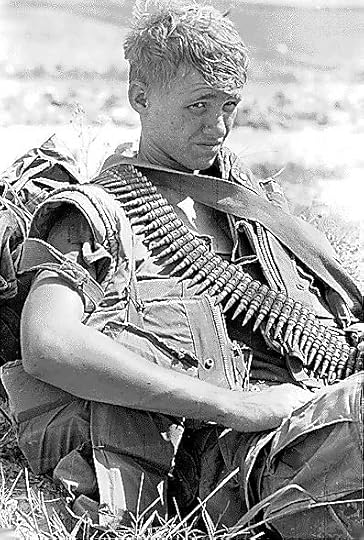
It was awful. Clashing floral prints just materialized out of the jungle. Out of the fucking jungle, man.
The unexpected theme was Blossom’s infrequent flights of fancy. It was more common in the earlier episodes in my admittedly tiny sample, with Phylicia Rashad stopping by to explain the menstrual cycle, Alf hanging around to discuss the afterlife, and Reggie Jackson talking about the merits of a little under-the-shirt-over-the-bra. These guest stars were an interesting time capsule of who was relatively popular (but not so popular they couldn’t be roped into a guest role on a sitcom), and provide a bridge to the much better shows that would come along in a decade. The final Very Special Blossom I will review on this site, “Blossom – A Rockumentary” (s2 e9) had all three in spades, as though it was trying to show me the ideal Blossom episode.
The entire twenty-two minutes are framed as Blossom’s fever dream. She has a bad TV flu in which she is supposedly running a temperature, yet is bright-eyed, bushy-tailed, and has sinuses as clear as an LA skyline after a good rain. Her father does what every good parent did in 1991, which is to provide four VCR tapes in those partly clear cases from the video store. For those who were born after 1990, there was a time when, if we wanted to watch a movie, we had to have either taped it off the TV previously, or go to a store to rent it. Also, they were big, grainy, and needed to be rewound. Anyway, all of the movies Nick rents for Blossom are rock- or mockumentaries about rock bands (mockrockumentaries?). Blossom passes out watching Madonna: Truth or Dare and the rest of the episode is her dream.
Truth or Dare was fucking everywhere in 1991. The voyeurism at the time seemed bracing, new, and yeah, probably a little naughty. Now? It’s just warmed-over reality TV to aggrandize someone who never needed any help in that department. In the interests of full disclosure, I somehow escaped 1991 without ever having seen Truth or Dare. This is probably because it was released a couple years after the height of my Madonna fandom. By then, I was a much older and refined gentleman, having discovered Nirvana, The Cure, and women who didn’t look like elbow skin. My point being that while I probably missed some of the more subtle homages to the film, that’s not really the point here.
The “lesson” Blossom learns here is to not be a selfish rockstar. But since that was only a dream, it’s not really much of a lesson. Soon as she wakes up, she doesn’t have a record contact, sycophantic relatives, or the mountains of drugs I was positive were just offscreen in every shot, and so the lesson doesn’t apply. Much more importantly, it showed what we thought was cool in 1991. It’s difficult to describe the baggy ponytailed nightmare Blossom envisions, as the longer I gaze into that high-waisted kneepadded abyss, the more it gazes back. And really wants me to listen to Boys II Men.
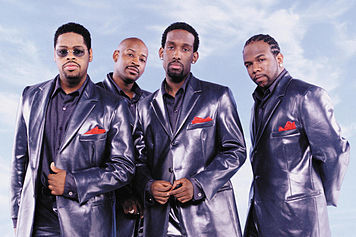
Ia Ia Cthulhu fthagn. Girl.
Much more telling are the cavalcade of stars who appear to shower praise on Blossom’s hallucinatory alter-ego. Don King, Tori Spelling, Dick Clark, the Davids Faustino and Cassidy, Phil Donahue, Dinah Manoff, Martha Quinn, and Wolfgang Puck all appear as themselves. The most bizarre “self” cameo comes from actor Jere Burns, currently doing stellar work on Justified and Burn Notice. Here he’s identified as “Kirk from Dear John,” which was his then-current role on the Judd Hirsch sitcom. And yes, there used to be Judd Hirsch vehicles back in the ‘90s. Maybe more telling are the actors they couldn’t swing but are mentioned. Blossom dumps Johnny Depp over the phone, and Tori Spelling whines that Blossom was dating Luke and Jason at the same time. While it’s not odd that they couldn’t score a big movie star like Johnny Depp, it’s tough to remember there was a time when a show couldn’t book Luke Perry and Jason Priestley. Jami Gertz, of Lost Boys and Twister , shows up in two references. One is a tongue-in-cheek list of Blossom’s influences (Katherine Hepburn, Madame Curie, Indira Gandhi, Margaret Thatcher, and Jami Gertz) as well as a reward for Grandpa Buzz (a big house and a picture of Jami Gertz). I’m not really sure waht to make of that, except to point out that I consistently mix up Jami Gertz and Jennifer Beals.
One guest star deserves special note. Playing Blossom’s boyfriend, the biggest movie star in history, the Charming Derek Slade (and yes, this is how he is credited) is a young Neil Patrick Harris. This is before Harold and Kumar put NPH on the road to his current status as universally beloved icon and everyone’s gay best friend. No one is immune to the NPH charm, not even Blossom. His voice is about an octave higher, and though he is not the unchained awesome he would later become, he still delivers a better performance than you’d expect, effortlessly upstaging both Mayim Bialik and Ted Wass in his portrayal of a shallow narcissist.
Well, that’s it. I have run out of Blossom to write about. Television still has a ton of painfully earnest lessons to teach me. I plan to move on to Lifetime movies next and see how many alcoholic moms I’ll find.
David discusses a much better use of your time, or check out Erik’s review of one of the greatest things ever.
Filed under: Projected Pixels and Emulsion Tagged: A Rockumentary, fever dreams, Madonna, nightmarish insanity, someone help, Truth or Dare, Very Special Blossom

March 17, 2013
And the Winner of HNR’s Very First Writing Contest is…
March 15, 2013
Diamonds are a Ghost Ninja’s Best Friend
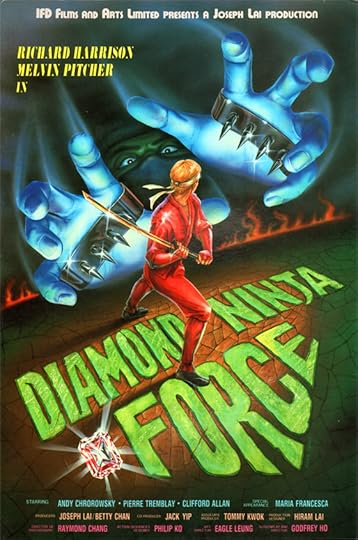
I climb your mustache, Richard Harrison!
Godfrey Ho rocketed into the Yakmala pantheon like a chimpanzee with a nuclear jetpack who is also suffering from fetal alcohol syndrome for some reason. This is because Ho’s movies make no goddamn sense. If the concept of logic ever wrote a suicide note, Ho would immediately turn it into a film. So naturally, I had to watch Diamond Ninja Force on youtube this weekend.
Tagline: A nightmare of deception and evil…
More Accurate Tagline: His mustache demanded vengeance…
Guilty Party: Godfrey Ho basically shot a movie and a half with Utah beefcake Richard Harrison, and then edited that footage to create every single film released in Hong Kong during the mid-‘80s. He doesn’t much care for logic, storytelling, or convincing terrified co-eds he’s not some Ritalin-addled Antichrist. He doesn’t really care for good kung fu, either. The true question is what does Ho care about? I have no earthly idea, but I’m pretty sure it’s riding a pale horse into Burger King headquarters right now.
Synopsis: The Black Ninja Clan has finally got some good news. The Black Ninja (Sir Not-Appearing-In-This-Picture, but for obvious reasons I like to pretend is played by Rudy Ray Moore) died a century ago during a feud with the Diamond Ninja Force. The “treasure” is still where the Black Ninja died, and the Black Ninja Clan needs to get it. The problem is, the present owner of the land, Bernard Wong, won’t sell, so it’s up to Kogan, leader of the Black Ninja Clan, to convince Wong to sell.
So the Black Ninja Clan embarks on a real estate scam. No, seriously.
Suddenly, we’re over with designated White Guy Gordon (Harrison, still stubbornly refusing to learn how to pronounce “ninja”), who chats on the phone with some guy who thinks “Kogan is behind it.” Gordon couldn’t give less of a shit, making some excuse about getting his wife settled. Then Gordon proceeds to water his mustache, knowing that if the beast goes too long without sustenance, it might turn on him.
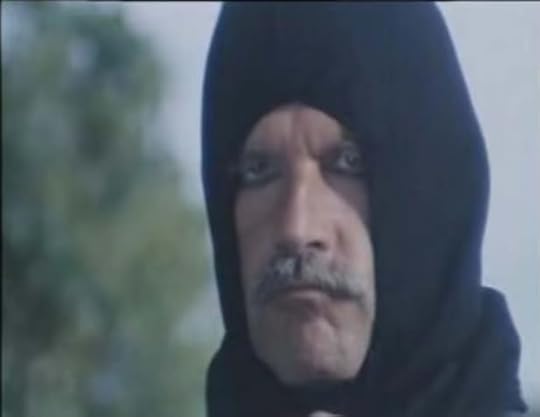
The mustache is in charge. And it thirsts for blood.
Meanwhile, Kogan gathers his Four Falcons together, who turn out to be the models for every single police sketch of every child molester ever. Two of them are noticeably tubby, a couple have wispy porn-staches, and there’s one in-shape Asian guy they probably picked up in a bathhouse in hopes he would show them around the underground scene in Bangkok. Kogan briefs everyone on the problem, and for some reason makes his point by doing karate at nothing, like he’s trying to beat a response out of the air. Apparently Bernard Wong is suddenly dead, and the new plan is to scare his daughter Fanny into selling. Kogan casually tosses off that they’re going to use the Ghost Ninja and everyone nods like he’s talking about a real thing, and not burbling at whatever night terrors he’s presently trying to karate chop.
Only one man can defeat the Black Ninja Clan: Gordon. He owns the Golden Ninja Warrior and is also the Golden Ninja Warrior. I’d say “the script is unclear” but if I did that every time it was, this review would end with a spiral of insane rambling, punctuated by a final note to my wife as I was dragged off by the Hounds of Tindalos.
The only way to beat the man who can beat you is to antagonize him, so Kogan goes after Lori, Gordon’s wife. First, he uses a little magic to make some goldfish pop out of a bowl and then he steps on them because fuck goldfish. Then he attacks Lori, demanding to know where the Golden Ninja Warrior is. She doesn’t know, and he kills her. Gordon finds her body later and after letting his mustache touch dead flesh, vows to feed it with vengeance.
After getting a death list from Steve, Gordon puts on his bright red ninja suit (I guess he’s the Golden Ninja Warrior because what with the coconut oil slathered over him in every shot, he’s sort of golden brown?) and goes off to slay the Four Falcons. Gordon murders the living shit out of all four of them pretty much effortlessly, and each time, he pulls down his ninja mask so that the mustache can see that its demands for death have been met. But nothing can truly sate its unholy hunger.
At this point, the mustache is just driving Gordon to kill anyone who has ever even heard of karate. This is the only explanation for finding this last guy, who isn’t even doing a kata. He’s just in his yard practicing The Robot. Two ninja stars to the nipples later, and the poor bastard is pushing up daisies. Sadly, the mustache is not finished, pushing Gordon to murder two cirque du soleil performers.
Gordon decides to stop fucking around just kill Kogan. First, he asks why the guy killed Lori since there was no beef between the Diamond Ninja Force and the Black Ninja Clan. The treasure is more important than that, so it’s time to fight. And holy shit. As bad as the fights were before, it’s like the mustache has devoured the last vestiges of karate in Richard Harrison’s body. It looks like two meth heads trying to peacefully decide who gets to urinate on who. Long story short, Gordon kills Kogan with a ninja star.
Maybe now the mustache will stop howling.
Life-Changing Subtext: Seek out the nearest white man to assist in all your real estate/ghost ninja needs.
Defining Quote: Gordon: “There are no ghosts. Only ghost ninjas.”
Standout Performance: Richard Harrison’s mustache. For obvious reasons.
What’s Wrong: I have a hunch I saw a truncated version of the real film, but I’m not sure seeing a full length would help clear anything up. It’s not like Godfrey Ho is known for being a competent, or even non-brain damaged, filmmaker. He fucks up on completely elementary aspects of movie making. He even fucks up with lighting, featuring scenes so dark you think your ocular nerves have taken the easy way out, and another scene lit so incompetently, a man’s clothes appear to change color mid-stride.
Flash of Competence: Fuck. I don’t know.
Best Scenes: There is basically a parallel plot that consists of nothing but Kogan fucking with Bernard Wong’s family. There’s Fanny, Bernard’s daughter, her husband, and their son Bobo. Yes, the boy’s name is Bobo.
Kogan makes phone calls in which he swings his sword around like he doesn’t understand the whole concept of telephones. He sends hallucinations, ghosts, and in one case a weird guy who hops into windows and beats his chest.
Gordon’s big solution is to send in Magic Chan, who is incredibly not a male stripper played by Chinese Channing Tatum. Anyway, Magic Chan does some good work, but really needs his magic mirrors if he’s going to clear up the infestation. Everyone treats this like a totally normal thing, like Magic Chan is just planning on tenting and fumigating the house.
Also, Magic Chan never appears onscreen. So maybe he is Chinese Channing Tatum.
Transcendent Moment: At several points, mustachioed bad ass Gordon talks on the phone to get some information. Of course, right? He’s like Batman, and Batman has a batphone. Only this time it’s a Garfield phone. Yep, Monday-hating lasagna-loving Garfield. And it’s not like Godfrey Ho wants to gloss over this. As Harrison hangs up, there’s a musical sting and a close up on the phone. Maybe Garfield is a bad ass symbol in China or something.

I hate two things. Mondays and ninjas. And Odie. Okay, three things.
The version of Diamond Ninja Force that I watched is available in its entirety on youtube. What are you waiting for? It’s a modern classic!
Clint, Erik, and I have reviewed Godfrey Ho’s other Yakmala entry, Ninja Thunderbolt.
Filed under: Projected Pixels and Emulsion, Yakmala! Tagged: Diamond Ninja Force, godfrey ho, mustache, ninja, richard harrison, vengeance mustache, Yakmala!

March 14, 2013
CITY OF DEVILS announced!
After much delay (no, seriously, the author actually sent in rewrites already), we’re very excited to announce a new acquisition: City of Devils by Justin Robinson (author of Mr Blank).
World War II was only the beginning. When the Night War ravages America, turning it into a country of monsters, humans become a downtrodden minority. Nick Moss is the only human private eye in town, and he’s on the trail of a missing city councilor. With monsters trying to turn him – or, better yet, simply kill him – he’s got to watch his back while trying to find his man. Or mummy, as the case may be.
Once, it was the City of Angels. But now, Los Angeles is the City of Devils…and Nick has a devil of a job to do.
Justin talks about the novel a little in this podcast.
Look for City of Devils this fall!
Links:
http://www.candlemarkandgleam.com/201...
http://fanboycomics.net/podcasts/fbs-...
March 8, 2013
Now Fear This: The Changeling

Dusty, child-sized wheelchairs. Nothing creepy about that.
For some reason, ghosts scare the living shit out of me. I don’t really know why, either. In most cases, restless spirits are not even a danger to the people they’re haunting. They just want revenge on the third party who wronged them. But give me a good haunted house movie, even with the most harmless of ghosts, and I will creep myself right the fuck out. This should not be a newsflash to anyone over the age of nine, but ghosts are not real. Yet they seem like they could be, and it’s that extra layer of plausibility that gives haunted house movies a level of verisimilitude that most other horror subgenres lack. Ghosts are by definition invisible and intangible, so it’s no wonder they are more difficult to find than, say, a giant radiation-breathing lizard monster. The stories are usually couched in the intimate settings of home, and the best haunted house films have a lived-in quality to both arena and character.
Ghost stories also share genre markings with noir. Hauntings spring from the kinds of sordid tales world-weary detectives like to plumb, and oftentimes, when a noir story ostensibly ends, a ghost story begins. That connection is readily apparent in this week’s Now Fear This entry, 1980’s The Changeling. This film should break the muddy and arbitrary rule of my feature, namely that the films I review be largely forgotten. The Changeling was a critical darling of its time, taking home the Canadian equivalent of the Oscar for Best Picture. For whatever reason, it never pops up on lists of good ghost movies, getting bumped for flashier fare like Poltergeist or The Sixth Sense. Unlike those others,The Changeling has a timeless, classic feel, building slowly with a sense of pervasive dread.
The film is about a haunting and as the protagonist attempts to discover the source, he learns something extremely disturbing about the former inhabitants of the house. Anyone familiar with the legend of the changeling (the earthly fairy kind, not the iron-fisted leaders of the Dominion), probably can already guess the big reveal of the mystery. That shouldn’t impact the enjoyment, because the film is more about mood than plot anyway. The reveal is even more shocking now than it probably was at the time, because of the ridiculous tyranny of handwringers at the MPAA currently demanding that nothing in pop culture be even remotely troubling. The reveal is one of those scenes whose impact hasn’t been diluted by hundreds of Saw knock-offs, the kind of thing that gets to the core of what we are as a species.

Poop-flinging serial killers, all of us.
I’ll get back to that later. The film opens with composer John Russell (George C. Scott) enjoying a snowy vacation in upstate New York. Everything is fantastic, but this is a horror movie, and so he gets to watch his wife and daughter get killed in a car accident. We pick up four months later, and John is trying to put his life back together. Scott wisely underplays every scene, giving the impression of a man who knows that if he breaks even slightly, he will crumble utterly. His subdued performance suggests that three people died in the accident rather than two, but the world was too cruel to take him along with his loved ones.
The haunted house in question is an overgrown manor that flirts with the great problem of many modern ghost films, namely that the house is far too large and creepy to feel real. The fear in horror is that of immediacy, and the more the filmmakers divorce the threat from modern life, the harder they must work to ground the movie. This is why classics like Alien give the heroes recognizable modern flourishes like baseball caps and pet cats, even though the likelihood of either existing that far in the future is slight. The mansion in The Changeling is too large to be relatable, but the director wisely introduces it in a series of echoey tracking shots, placing the audience within the dusty walls.
Tragedy is often used to link the victims and perpetrators of hauntings, the idea being that a brush with death can open a person’s mind to the unknown or draw a connection between worlds. In this case, the link is embodied in a ball that once belonged to John’s daughter Cathy that he keeps close as a sad reminder. The ghost uses the ball to reach out to John, however what comes off as a playful overture from a living person can be downright unnerving coming from a murder victim seventy years dead. The fascinating thing about the ghost is that at times it seems to have a consciousness motivating it to communicate and at other times it mindlessly re-enacts its demise. This has always been a tantalizing aspect of ghost fiction: what does a human being lose in death that makes a haunting the most effective mode of communication? Something clearly gets scrambled during or after death, or otherwise a haunting would consist of a couple polite notes pinned to the refrigerator.
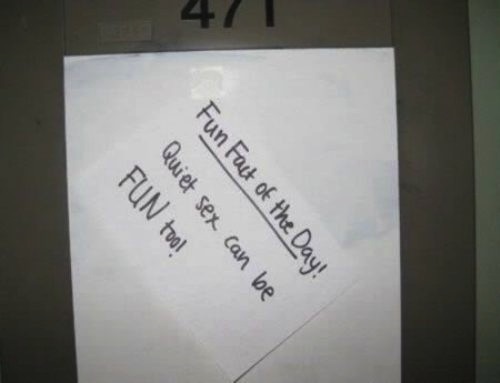
Dead judgmental assholes.
John deals with pounding sounds at specific hours, apparitions in the upstairs bathroom, and faucets turning on spontaneously before a broken window leads him to a secret room. This is another wonderful trope in ghost movies, an eerie little detail adding to the surreality of a haunting: the room that is visible from the outside but hidden from the inside. Finding a child-sized wheelchair and other creepy, dust-covered memorabilia from the turn of the century, John begins his investigation in earnest. The creepiest accent is a music box that plays the tune John has spent the last several days apparently writing. Medium scenes are de rigueur in haunted house films, and The Changeling is no exception. The medium is refreshingly underplayed, acting as though she were in a constant low-grade trance, asking her questions in a dreamy monotone, while her pencil scratches violently over paper. As John discovers sepulchral whispers on the recording of the seance, we get the shocking scene I alluded to earlier.
As John grows closer to the venal truth of the crime, the ghost loses its patience. The investigation seems to strengthen and paradoxically anger the spirit. It begins merely wanting attention, then justice, then actively needing it, and finally angrily demanding it, forcing our hero to play a dangerous game, the stakes of which keep rising out of his control. And like all good noir stories, the ultimate villain is a powerful man with an awful secret.
Grounded by Scott’s subtle performance, bolstered with a solid story, and filled with eerie menace, The Changeling deserves to stand next to other classic cinematic ghost stories. The real tragedy is that the only people who suffer are the innocents.
Louis also has problems with critical success. Or hop in the wayback machine for Vera’s take on curling.
Filed under: Projected Pixels and Emulsion Tagged: a football in George C. Scott's groin, child-sized wheelchairs, disturbing, George C. Scott, Now Fear This, The Changeling

March 1, 2013
Very Special Blossom: Intervention
Achievement unlocked
10G – Alcohol of Fame
Those words popped up inside a little gray caption on my internal Xbox 360 after completing my master-class in Afterschool Specials. Both of my readers will recall that the series featured not one, but three different episodes showcasing the same problem: drunk moms screwing life up for their teenaged daughters. I’m the goddamn expert in getting into Alateen and trying not to stress about things that are ultimately not my responsibility. So when the title of this week’s Very Special Blossom popped up, “Intervention” (s2 e7), I was ready to go. At first blush, the title looked like a reference to Tony falling off the wagon and returning to his tragic-yet-hilarious party animal past, but any student of early ‘90s network television knows that sitcoms never went that dark with a series regular, and the serialization was not up to covering a multi-episode arc of any magnitude. It’s like that one episode of Family Ties where Alex’s best friend dies, only it’s someone that was never mentioned previously and never spoken of again. If Tony fell off the wagon, it would be in a quick 22 joke-filled minutes, and that is not the level of seriousness the creators of Blossom were looking for.
The alcoholic in question is Joey’s friend Frankie. The actor playing Frankie, Matt Levin, has one of those faces where you think he is much more famous than he is, mostly because he looks like a combination of Joaquin Phoenix, Brian Austin Green, Paul Walker, with just a soupçon of Jack Black thrown in for relatability. Levin has shown up in bit parts in movies like Zoolander, Tropic Thunder, and Starship Troopers, but his career is mostly in voice acting. In the role most dear to my heart, he appears in Mass Effect as Clerk Bosker. Anyway, Levin is very young here and confusingly never plays Frankie as being drunk. Maybe it’s because playing drunk is one of the easiest things to do badly, but regardless, in an episode about alcoholism, the alcoholic never actually seems inebriated.
Five minutes after slapping eyes on an underwear-clad Frankie, Tony recognizes the signs of the boy’s TV alcoholism. Unconventional sartorial decisions? Check. Toting around a water bottle filled with vodka? Check. Ridiculous party stories that sound like they came from a room of exhausted, strung-out writers? Check. Tony first makes sure that Joey isn’t drinking and he’s not, because he’s on the baseball team. Fortunately, Joey is not much of a student of history, or he’d know that the greats of yesteryear played drunk and hungover, and annihilated records while so doing. One of the great what-ifs of sports history is how incredible Mickey Mantle would have been had he actually shown up sober, or was able to play without a functionally crippled leg. Or had access to bull shark testosterone. Baseball is such a rich tapestry!
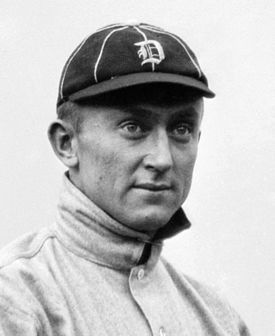
A shockingly racist tapestry.
Anyway, Tony Sherlocks the living shit out of Frankie, who immediately throws Tony’s past in his face. I was actually glad to see this, because too often fictional characters get away with being self-righteous douchebags who ignore their own past mistakes to judge others on their present ones (see Summers, Buffy and Shephard, Jack for two perfect examples). Still, Tony is in the right here, and he spends the rest of the episode gently encouraging Joey to talk to Frankie about the problem. Joey, though he likely has not heard the phrase “shoot the messenger” and even if he had, wouldn’t know what it means, is concerned that he’ll lose his friend if he speaks up. Tony explains that he’s going to lose him anyway.
Meanwhile, over the B-plot, Nick and Blossom realize that they haven’t really been interacting with one another. Nick decides that he and Blossom are going to blow off work and school respectively and spend the day together. My mother used to call these impromptu vacations Emotional Health (or EH) Days. Nick and Blossom have the platonic ideal of EH days as they see a couple movies, have a cake and ice cream dinner, and go to a hockey game. It doesn’t really connect with the A-plot thematically or narratively, as though they wanted to segregate two characters from the heavy stuff and focus on other parts of the cast. Tony comes off best, but I’ve gone on record as saying he is the one character on the show with any originality. The irony happens when Tommy Newsom, the Assistant Music Director of the Tonight Show, keeps trying to get ahold of Nick to sub in on piano for that evening’s show. The running gag consists of Tony or Joey answering the phone, knowing who Tommy Newsom is (which, sure, they live in a house with a working musician), and believing it to be a crank call because there’s no way Tommy Newsom would call them. Because Nick was out with Blossom, he misses the gig and sees Grandpa Buzz perform on TV. So the moral here is that you should ignore your children I guess?
Because Frankie is a TV alcoholic, he needs to have a Big Moment to prod the dithering Hallmark Hamlet (in this case Joey), into Doing The Right Thing. In this case, Frankie tries to fill up his ever-present Water Bottle O’ Vodka from Nick’s liquor cabinet. Joey comes in holding a baseball bat, and for a single, shining moment, I was hoping Brian De Palma had directed this episode. Sadly, no. Joey tries to interest Frankie in a wholesome trip to the batting cages. Frankie, who has quit the team (one of the signs Tony astutely noted earlier), takes the bat and starts to violently reminisce about the time he batted in the winning run in The Big Game. From the couch, Mrs. Supermarket sneered, “He’s not acting drunk. Just like a douche.” She was not wrong. Anyway, though the boy doesn’t do much more than wave a bat a little, this provokes Joey into pointing out the elephant in the room. Which is a metaphorical elephant. Made of vodka. I’m not sure, because I’m bad at metaphor.

Like a Japanese Giant Salamander, which is also bad at metaphor.
So what did we learn? If your friend is going to be a douche, call him on it. The worst thing that’s going to happen is that you lose a douche for a friend, and that sounds like a win-win to me. Good job, Blossom!
What did other people learn around the Show? Dante learned never to trust Comic-Con. And Ace learned the power of baking.
Filed under: Projected Pixels and Emulsion Tagged: alcoholism, Blossom, intervention, Very Special Blossom

February 22, 2013
Now Fear This: The Stuff
Oh, look. He’s doing a Sasha Grey impression.
I make a lot of hay over what it was like growing up in the ‘80s to the point that any younger readers might assume it was halfway between The Road Warrior and that episode of Diff’rent Strokes where Gordon Jump molests Dudley. One of my long-running series on this blog is basically all about how there was sweet fuck all to watch on television, so we were often forced to waste time on bizarre morality plays, or even worse, read a goddamn book once in a while. I was luckier than many of my friends in that I can’t remember a time in which I did not have some form of cable. When I was little, there were four movie channels, Showtime (channel 15), The Movie Channel (17), HBO (20), and the Z Channel (99). With so few channels, you’d think you would never see the same movie twice, but the opposite was true. Certain films were played in heavy rotation without any apparent relation to their quality or popularity, and these have an outsized place in the specific pocket culture of my childhood. One of these that seemed to air every lazy Sunday afternoon is the 1985 Larry Cohen horror satire The Stuff.
The titular Stuff is introduced bubbling up in a field of ice, looking like what might happen if crude oil had semen. Yet, in the most baffling decision I’ve ever seen, the old man discovering it promptly puts some in his mouth. To his delight, he finds that it’s the tastiest thing to come out of the ground since he stopped licking dinosaur fossils. A single smash cut later and the new super dessert known by the descriptive name “the Stuff” has become the must-have food item of the mid-‘80s. It’s low calorie and delicious, but no one can figure out what’s in it. A group of plutocrats wants the recipe so they can start a Coke/Pepsi war and hire industrial spy Moe Rutherford (Michael Moriarty, Cohen mainstay and the man who thought the Law & Order franchise would collapse without him) to get it.
Moe first makes contact with Nicole Kendall, the young marketing whiz responsible for the Stuff’s ad campaign and earworm of a jingle, learning that the product was originally tested in remote Stader, Virginia. On his trip there, Moe finds that the majority of the townsfolk have picked up for Midland, Georgia, leaving behind only enough of a slack-jawed and dead-eyed presence to creep the living fuck out of anyone who pokes around. When Moe witnesses one of these troglodytes expelling several gallons of Stuff from his body like a bulimic Mr. Stay Puft, and the white goop then slithers off on its own, Moe realizes that something’s rotten in the state of Virginia. And Georgia.
Is The Stuff a delicious alternative to yogurt or a Lovecraftian colony organism? Turns out it’s a delicious low-calorie alternative to yogurt AND some kind of Lovecraftian colony organism! As befits a truly alien entity, the motives and abilities of the Stuff remain somewhat murky. It eats its victims from the inside-out, while its addictive qualities insure its prey craves the very thing that is killing them. Eventually, it appears as though the Stuff becomes the animating consciousness of its Stuffies, although again it is unclear as to whether it is truly controlling minds or merely acting as a powerful addiction. This ambivalence works to the film’s advantage, leaving us with a bizarre and mouth-watering entry into the Cthulhu Mythos.
Larry Cohen movies tend to have brilliant concepts marred by so-so execution, and The Stuff is no exception. Intended as a ruthless satire of American consumer culture, there are times when The Stuff hits on all levels. The plutocrats pulling Moe’s strings are not interested in the possible negative health effects of the Stuff, they merely want to duplicate it. The slick ad-campaign proceeds apace without those involved even knowing that what they’re selling is actually some antediluvian god-mass from beneath the earth’s crust. They still manage to put together a jingle that’s still rattling through my head four days after watching the film and creating a logo so perfectly of the time you’d swear it was in your fridge. The product’s tagline could double for the entire philosophy of the go-go ‘80s: Enough is Never Enough.
The film fares well largely due to a cast of ringers led by Michael Moriarty, who might be the greatest b-actor of all time. His naturalistic delivery grounds often clunky writing, and he adept at creating a character with a few careful choices. Danny Aiello and Saturday Night Live’s Garrett Morris have small roles. Paul Sorvino has a pivotal role as the leader of a right wing militia whose media presence helps get the word out about the danger in the Stuff. Sorvino’s character manages to be both the best part of the third act and also a bit of a miscalculation. His ur-Tea Party blockheadedness is largely played for laughs, though there is a troubling scene when his character’s boiling undercurrent of racism is laid bare.

Although it’s possible when he said “colored” he meant “blah.”
Where The Stuff really falters is the ending. For the film’s apocalyptic satire to be truly effective, an addicted public should have ignored the warnings of Moe and his group, coming as they were from a single radio station commandeered by a militia, that would have made far more sense. The Stuff should have continued to fly off supermarket shelves, as America ate itself into oblivion. As it stands, the happy ending feels unearned, and would reek of studio meddling if a studio had ever given a single fuck about such a quirky orphan of a film.
The idea of the useless shit we as Americans accumulate eating us is a good one. That’s the Curse of Cohen, the consummate idea man betrayed by mediocre follow-through. While watching this film, I remarked to Mrs. Supermarket that there is a good career to be had in remaking the films of Larry Cohen. The man was a horror visionary, just not the greatest horror filmmaker.
Check out David’s favorite Stuff equivalents!
Filed under: Projected Pixels and Emulsion Tagged: consumer culture, Larry Cohen, Michael Moriarty, Now Fear This, satire, the '80s, The Stuff

February 15, 2013
Watch This: Banshee
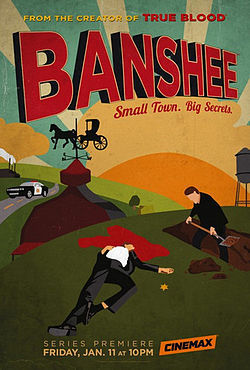
If your show has a shallow grave on the poster, I will watch.
In the Arrested Development episode “Best Man for the GOB,” the Bluth family throws a fake bachelor party for eldest son GOB as cover to fake a narcoleptic stripper’s death. It’s a long story. Relatively sane brother Michael catches GOB carrying the buckets of fake blood and asks what they might be. Thinking quickly, GOB claims they’re juice. An excited Buster, youngest brother and juice enthusiast breathlessly squeaks, “We have unlimited juice? This party is gonna be off the hook!” Since then, “unlimited juice” has been code in the Supermarket household for anything that is balls-out crazy in the best way. It’s how we describe the Crank movies, the entirety of IFC’s tragically short-lived Bullet in the Face, or the novels of James Ellroy. A few weeks ago, while the parental advisory warnings appeared on the screen just before the second episode of Banshee, my wife turned to me and solemnly declared, “This show has unlimited juice.”
She said this because the warning pretty much listed everything possible: Graphic Violence, Strong Language, Adult Content, Nudity, and Strong Sexual Situations. And this is not a unique situation. The creators of Banshee seem to look at the advisory as more of a checklist than anything else. “Okay, we have a sex scene, we’re set on the profanity, and several people are naked. I feel like we’re forgetting something. Wait, do we have violence? Is it graphic? Fine, have the sheriff pull someone’s ass out of their ass. We’ll do reshoots” At times, it seems like they’re trying to make censors come up with entirely new categories. Hilariously, Cinemax’s censors (there is apparently such an animal) have given up: the last two episodes have warned about Strong Language and Adult Content, despite featuring full frontal nudity, several sex scenes, and a guy going apeshit on a biker gang with a pair of collapsible batons.
Look, I’m with you. Something that is shocking only for the sake of being shocking is unworthy of even a single fawning entry on an obscure pop culture blog. Insanity must be used in the service of the story. The trick then, is to make something so batshit crazy, so toys-in-the-attic nuts, that the checklist not only becomes desirable, but is in fact vital. And this is the rarified air in which Banshee has found itself.
Cinemax has been branching out in recent years. The infamous purveyor of soft-core sleaze has been making a bid for, if not respectability, for viewers to defend their programming with a self-conscious blush and whined, “No, it’s really good!” I have heard good things about their anti-terrorist action show Strike Back, and I enjoyed their bizarrely arty spy thriller Hunted. So when I started to see advertisements in a cartoonish postcard style for a new show on Cinemax, I didn’t immediately dismiss it as a wank vector for people who don’t know about the internet. It helped that the show’s tagline “Small Town, Big Secrets” is like a dog whistle for anyone who loves noir.
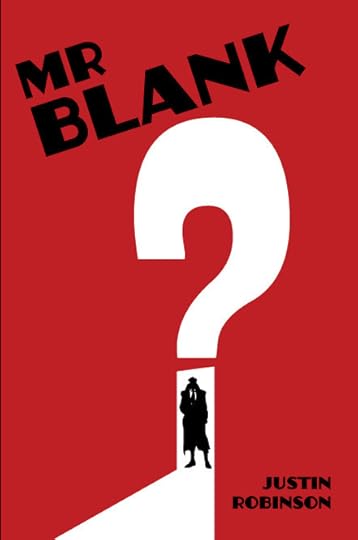
Available in paperback! I hate myself.
To say I wasn’t disappointed in the pilot would be a vast understatement. It would be far more accurate to say I was desperately trying to figure out how my balls had written a show and managed to sell it to a network. And the worst part is, my balls are such hot shit in Hollywood now that they don’t return my calls. Assholes. Anyway, Banshee turned out to be much like Nolan’s Batman movies — it wasn’t the show I wanted; it was the show I needed. I didn’t even know there was a void in my life to be filled until I saw Sheriff Lucas Hood stab a man to death with a bottle of steak sauce.
Okay, fine, it wasn’t actually Lucas Hood. It was an ex-con who just watched the brand new sheriff of Banshee County get murdered by a couple rednecks before uncorking a level of street justice Frank Miller would have had to describe one-handed. And now the ex-con has stolen the identity of the sheriff, sticking around in Suburban Gothic Banshee, Pennsylvania for somewhat mysterious reasons. One of my pet peeves in shows featuring cops is that oftentimes the police are terrible at their jobs, and yet the conceit of the show is not that these are bad cops. In Banshee, the protagonist’s brutal incompetence is built right into the character.
He’s sticking around in Banshee because his former partner in crime, a terrifying and frequently naked thief who looks like what would happen if Hippolyta of Themyscira had tried to sculpt Mila Kunis out of marble, now lives there under the guise of suburban housewife. Her husband is the local DA who is obsessed with bringing down the local crime boss, Kai Proctor, who also happens to be Amish. Yeah, you read that right. The mob in town is fronted by an Amish-born gangster who runs the local meat-packing plant and has a thing for hookers in bonnets. Hood’s sidekicks include a washed up former boxer and fellow ex-con, as well as a bad ass transvestite hacker. It’s this last character, Job, that marks the series as an Alan Ball effort, since the character is a lot like Lafayette from True Blood with the brake lines cut. He is responsible for the best line in the series thus far. When he arrives in Banshee, he takes a jaded look around, and mutters in a honeysuckle drawl, “Here come the motherfuckin’ neighborhood.”

Every show should have a man named G/JOB
I mentioned that Job is a bad ass. This is a redundant description. Thus far every criminal character in the show is an unstoppable master of freeflow melee mayhem. They seem to exist in a fugue state in which asses remain unkicked only because they cannot muster the strength to give a fuck enough to pick up the nearest object and invent a new way to insert it into the hapless form of their enemy. The fight scenes in Banshee, and they average at least one per episode, are visceral and thrilling slices of righteous ultra-violence.
It feels like Banshee knows my pet peeves in both storytelling and neo-noir and works to tease me that they might come true, and then subvert them. Noir as a genre is often misogynistic and there is always the concern that any new effort will show some ugliness toward women. So when they introduced a sexpot whose only apparent purpose was to have athletic sex with Hood, I inwardly rolled my eyes. When they revealed her to be Amish, I got interested, and when she and Hood had a moment of connection over their double lives, I was sold. And, when she pulled a knife on a biker and shanked him while in full Amish gear, I wondered what the hell my problem had been in the first place.
Banshee is not going to be enshrined in conversation alongside sacred cows like Breaking Bad, Mad Men, and The Wire, but it is a nifty neo-noir worth your attention. And it has unlimited juice.
Erik also loves Banshee! And Breakin’ 2 Electric Boogaloo. Or check out David’s picks for his favorite movies of the year.
Filed under: Projected Pixels and Emulsion Tagged: Alan Ball, Banshee, Cinemax, noir, unlimited juice

February 8, 2013
An Extremely White Wedding
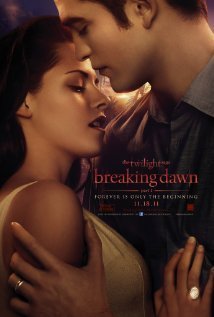
“You smell like bologna.”
Greed is an ugly emotion. It nearly caused the collapse of the global economy in 2008. Even worse, it caused producers to split the novel Breaking Dawn, the fourth in the Twilight “saga” into two films, despite not having enough plot for the cold open of an episode of Law & Order. So here we go, a review of Twilight: Breaking Dawn Part 1.
Tagline: Forever is only the beginning
More Accurate Tagline: Actually, considering this movie’s interminable run time, geologic pacing, and lack of anything approaching incident, that tagline is entirely accurate. Christ, even the marketing department at Summit hates this series.
Guilty Party: The marketing department at Summit. In a stunning reversal of my previous love letters to the Twilight series of films, I do not blame this film’s awfulness on Stephenie Meyer. Not because she suddenly developed the ability to write; on the contrary, her storytelling somehow manages to worsen with every installment. No, the fault here lies with the nameless and soulless void of all-consuming hate who chose to split this fucking thing in two. So we get almost two hours of pregnant pauses in which overmatched actors beg silently for a death that will never come.
Synopsis: Previously, on Twilight: Edward loves Bella. Bella loves Edward. Jacob loves Bella. Edward is a vampire. Jacob is a werewolf. Bella is a mouth-breather. Bella wants to be a vampire. Edward wants to be married. They agree to do both. The Volturi are mean. (I wish they connected more to the story, but seriously, that’s literally the only link they have to anything).
Bella and Edward get married. Jacob is sad. Bella and Edward have sex. Bella gets pregnant. The fetus has superpowers and slowly kills Bella. Jacob is sad. Edward is sad. The werewolves are mad because Bella is human and vampires aren’t allowed to kill humans.
Jacob leaves the werewolves to guard Bella. Bella gives birth and dies. Edward bites her a little. She still dies. The werewolves attack. Everyone fights. Jacob falls in love with the baby. The werewolves can’t attack now. Bella comes back to life as a vampire. Dr. Acula sends a birth announcement to the Volturi.
Life-Changing Subtext: Abortion is wrong, even in cases of rape, incest, and Alien-type situations. That xenomorph has a right to live!
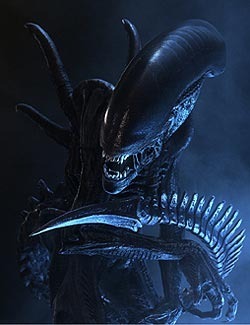
If it’s a legitimate facehugger, the human body has a way of shutting that down.
Defining Quote: “Say the word, Alice. Baby. It’s just a little baby.” — Rosalie on the thing presently ripping Bella apart from the inside. It’s fun watching a movie that’s a Trojan Horse for the author’s far right wing insanity. Unfortunately, the movie doesn’t go even farther with it. “You know, Bella, the only reason you’re dying is because of Obamacare!”
Standout Performance: The MVP of the series is Billy Burke as Bella’s dad, Charlie Swan. Burke knows exactly how fucking ridiculous this whole situation is and seems to be only marking time between tall glasses of bourbon, a wistful head shake, and a muttered, “How’d it come to this?” His acting choices all point to a man who has not only run out of fucks to give, but has forgotten what it was like to care about anything.
What’s Wrong: Normally my synopses are wildly digressive exercises in showing how much more I care more about what happens in terrible movies than their creators. The problem with applying that same attention to terrible, terrible detail with the Twilight series is that barely anything actually happens. Breaking Dawn Part 1 ratchets that up even further, giving us two hours of long pauses, halfhearted misunderstandings, the odd pro-life screed, and even longer pauses. The wedding alone is the first half hour of the film, the honeymoon the second half hour, and the rest is characters mostly staring at each other. You know how people go mad when put into solitary confinement for too long? Denied interaction, the brain cannibalizes itself in a desperate attempt to retain sanity. Breaking Dawn Part 1 plays as an avant-garde attempt to make the mind buckle in just under two hours.
Flash of Competence: Ashley Greene rocks an adorable pixie cut. Also, all the money the FX company saved with their awful wolf CGI pays off here with some nifty shots of the vampiric venom turning Bella’s insides into stone or whatever.
Best Scenes: During the interminable wedding scene, there is a toast montage. The best moments predictably come from Billy Burke and Anna Kendrick. In a defeated monotone, Burke enumerates all the ways he could murder Edward, inadvertently providing the wedding party with a glimpse into Charlie’s dark night of the soul. Kendrick gives a toast at turns bubbly and bitter, mentioning that she calls Edward “The Hair.” I briefly wondered if an actor with Kendrick’s skill and charisma could have saved the Bella role, but then was relieved she got out of the Twilight saga relatively unscathed.
The next fantastic moment occurs when Jacob shows up late to the wedding. He’s predictably emo about the whole thing, since Bella is getting turned into Jacob’s ancestral enemy in a couple hours. Bella mentions that no, she’s having a normal honeymoon, and then does not waggle her eyebrows and nudge Jake with her elbow in hopes he’ll get the point. Jacob then loses his shit, yelling at Edward that vampire sexing will kill Bella.
Edward grins and says, “Kill her? I’m gonna DESTROY her.”
No. No, he does not. He just looks sort of constipated.
Here’s the thing: Jacob is being a big old drama queen, but he’s kind of right. The sex manages to tear the bed apart, shred the pillows, and put giant Chris Brown bruises all over Bella. While the subtext of this is hilarious, it’s even funnier when the rest of the honeymoon is spent with Bella begging her possibly gay husband for more sex and him coldly rebuffing her.
The werewolves have a parliament, which I have come to refer to the Dog Park. Basically, a bunch of CG wolves converge on a lumber yard and snarl at each other, while some echoey dialogue is ADRed over the top to imply telepathy. They’re all mad about Bella’s fetus, but the bad werewolves want to abort it, while the good werewolves (Jacob and Seth) want to protect Bella. It somehow manages to be a step down from the abortion debate presently occurring in our country. It’s really hard to convey how funny this is until the next time you’re at a real dog park, and you imagine two dogs tussling are actually worried about Kristen Stewart’s vagina.
Transcendent Moment: There’s a moment in the Twilight series when you truly understand the turgid depths of Stephenie Meyer’s insanity and it happens at the end of this film.
As Jacob prepares to murder the newborn baby who just killed the girl he’s been stalking for two and a half movies, his eyes meet the infant’s. And it’s worth noting that there’s a creepy face CGed onto the baby’s mug. As the kid gives Jacob a look that would not be out of place in a singles bar, the hapless werewolf imprints all over the helpless infant. All over her little chubby cheeks, her wispy hair, her lower back…
And now, Jacob Black, heartthrob to millions of teenaged girls and a distressing number of middle aged women, is in love with a baby.
I write horror and could never come up with something that fucked up.
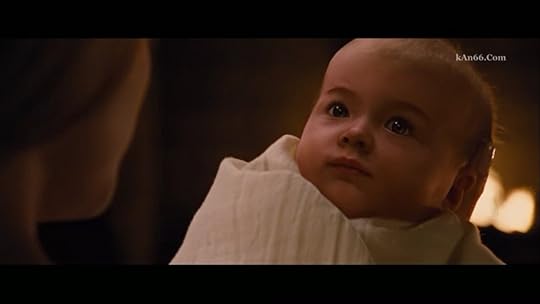
Hey girl. You like Yo Gabba Gabba?
I know I say this every time, but Breaking Dawn Part 1 is the worst part of a terrible series. I must admit, there is a dark little part of me that wonders if Breaking Dawn Part 2 can’t top it.
The Twilight saga is a favorite subject at your Satellite Show. Check out Clint’s comparison to outmoded online gaming, or Mark’s meditation on faith.
Filed under: Projected Pixels and Emulsion, Yakmala! Tagged: breaking dawn part 1, endurance test, madness, The twilight saga, twilight, Yakmala!




